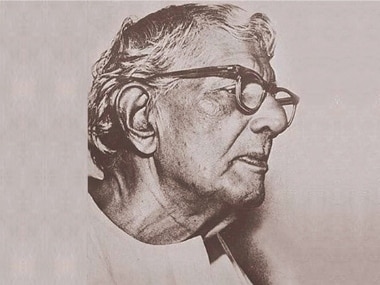April is the month of many an Indian harvest festival — Baisakhi for many, Ugadi for some, Cheti Chand for a few, and Gudi Padwa for several others. These ‘new years’ serve to remind us that our original celebrations were tied to our land and not to the Gregorian calendar. April is also, fittingly, the month of the birth and death anniversaries of Jamini Roy — India’s Father of Folk Renaissance. This dichotomous ‘new year’ celebration metaphor is perhaps most apt to describe his life and art, for he is counted among the staunchest practitioners of the indigenous style, having crossed over from the Western. And when Google dedicated a doodle to him on his 130th birth anniversary in 2017, the circle seems to have become complete. [caption id=“attachment_6436291” align=“alignleft” width=“380”]  The month of April marks the birth and death anniversaries of India’s Father of Folk Renaissance: Jamini Roy[/caption] Roy’s primers Long before he realised it, Roy’s influences came from the place of his birth: the Bankura district of West Bengal. The region is famous for its terracotta temple art — built through the 17th and 18th centuries by the Malla kings — as also its Baluchari sarees and sweets. Though Roy himself was born in the village of Beliatore in 1887, the entire district takes obvious pride in their prodigious son. Late last year, the town of Bishnupur was given a facelift with Jamini Roy-style murals on its public walls as a tribute to his genius. Carrying impressions of rural life and art, a 16-year-old Roy went to Kolkata for formal education at the prestigious Government College of Art & Craft. There, under the tutelage of famous artists and intellectuals like Abanindranath Tagore and Percy Brown, he received training in the Western form and style, as was the norm then. In his early years as a practising artist, he made his living as a portrait painter, painting in the manner of Europeans. But he was soon disenchanted by this style. He began to toy with Indian art forms, particularly the Kalighat-style paintings and patuas of his native Bengal, and chose to use tempera and water colour instead of oil paints. He was admittedly inspired by artist Sunayani Devi, who also belonged to the Tagore family — one Roy was famously associated with. The associations went beyond the artistic; a fevered nationalism coloured his work, too. In the thick of the freedom struggle he found India in the villages, and his subjects and choice of materials became increasingly local and rural. Around the age of 34, he deliberately changed the course of his life and practice. Thanks to his distinctive primitivism — an aesthetic idealisation of the primitive experience — he was set to become one of the most illustrious names in the Bengal School of Art, and indeed, the nation. A study in prolificacy Reclusive and austere, Roy made art all the time. In his prime, he would churn up as many as ten paintings a day, and produced a whopping 20,000 in his lifetime. Despite the volumes, however, he was known to be rather possessive about his work and refused to sell it to anyone who he thought would not truly appreciate it. He is known to have even bought back his paintings if he found them being neglected. But to those he sold, he did solely for the love of art, for his average asking price was a humble `350. He struggled in the early 1900s to eke out a living, but eventually found international fame in the 1940s through exhibitions and admiring critical reviews. A slew of recognitions came his way, including the Viceroy’s gold medal in an exhibition in 1934, a Padma Bhushan in 1955, and the first Fellowship of the Lalit Kala Akademi the same year. He was also posthumously declared a national artist by Indira Gandhi in 1972. Quintessentially Roy With an essentially-modernist outlook on folk arts, Roy’s most recognisable themes include sensuous Santhal women, episodes from Indian mythology, scenes from country life, landscapes, cats, and Jesus, especially The Last Supper. His magnum opus is, however, the Ramayana — a 17-canvas series that he painted in 1946. His use of bright colours, bold lines and serene faces are evocative of the art of India in its most lush sense. Roy’s art is emblematic in its stature for it reached pure, universal forms which, in Stella Kramrisch’s words had, “a moral value which irritates his detractors, eludes his imitators and makes his work the standard against which contemporary Indian painting is to be measured”. (Urmi Chanda-Vaz is a psychologist by training, and dabbles in Indian history and culture)
The artist’s most recognisable themes include sensuous Santhal women, episodes from Indian mythology, scenes from country life, landscapes, cats, and Jesus, especially The Last Supper
Advertisement
End of Article


)

)
)
)
)
)
)
)
)



